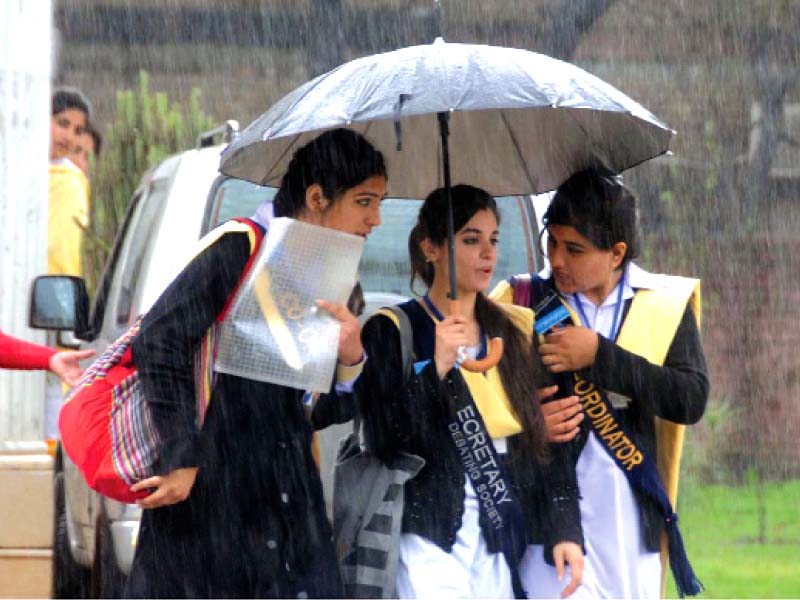
Owing to above-average rains this year, sprouting and budding of trees has relatively been slow, which has contributed to less pollen in the air providing the much needed respite to the patients suffering from respiratory diseases.
“Despite heavy rainfall this year, the paper mulberry pollen count is 10,185 per cent, which is still very high,” said a Met official.
He said that though pines, grasses, cannabis and other flora also affect allergy sufferers, paper mulberry had the largest impact in Islamabad, with the peak season being March and April.
Meanwhile, wheat growers in upper parts of the country, especially in arid and semi-arid areas in Punjab, Khyber-Pakhtunkhwa and Azad Jammu and Kashmir have welcomed the new rain spell amids forecast of more rains by the Met Office in wheat growing areas during the next two days. Experts, however, have said that if the rain spell were prolonged, it could damage wheat and rice and other seasonal crops.
“At the moment, a very good wheat crop is expected in arid and semi-arid areas as well as in irrigated areas of central and southern Punjab and in Sindh, however, the crop could damage if the rain spell prolongs,” said Dr Sikandar, a wheat crop researcher at the National Agriculture Research Centre.
“In irrigated areas, wheat crop is one month ahead of arid areas and at this stage, the crop needs more heat to ripen, while the presence of excess water bacteria could damage the roots of the crop,” said NARC researcher Dr Muhammad Sohail.
“Rains with thundershowers accompanied with gusty winds and isolated hailstorms at scattered places of Sukkar, Larkan, Jacobabad, Ghotki, Khairpur, Nausharoferoze districts will enter into Sindh on the afternoon of Thursday and Friday which can damage standing wheat crops and mango trees,” Chief Met Officer Dr Ghulam Rasool told The Express Tribune.
He advised wheat growers in Sindh to follow advisories of the Met office to avoid losses due to rain. The Met Office has also forecast more rains with thunderstorms and gusty winds and isolated hailstorm at scattered places of Balochistan including Quetta, Zhob, Kalat, Sibbi, Dera Bugti, Naseerabad, Musakhel, Jhalmagsi and Kohlu Districts on Thursday.
The Met Office has also forecast rain accompanied with gusty winds at scattered places of Rawalpindi, Gujranwala, DG Khan, Rajanpur, Rahim Yar Khan, Multan, Bahawalpur, Lodhran, Vehari, Bahawalnagar, Khanewal, Sahiwal and Pakpattan districts between Thursday and Friday.
Rain and thunderstorm has also been forecast at scattered places of Peshawar, Malakand, Swat, Buner, Mardan, Charsadda, Nowshera, Swabi, DI Khan and Haripur during the next couple of days.
Published in The Express Tribune, April 2nd, 2015.

































1714024018-0/ModiLara-(1)1714024018-0-270x192.webp)









COMMENTS
Comments are moderated and generally will be posted if they are on-topic and not abusive.
For more information, please see our Comments FAQ